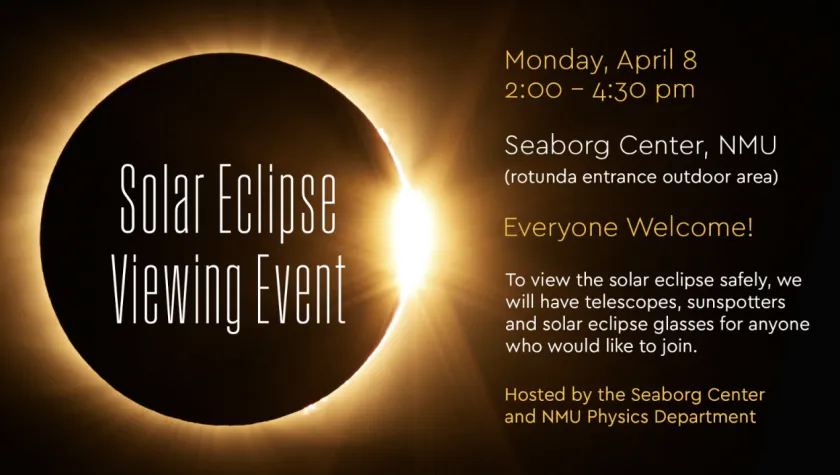Northern Michigan University's Physics Department and Seaborg Center are partnering to host a community viewing of the solar eclipse on campus April 8. They will use combined equipment ranging from purchased glasses to telescopes to ensure that attendees can safely watch the moon glide over the sun's surface, casting a shadow over North America.
Physics Department Head Dave Donovan said the eclipse is scheduled to begin at about 2 p.m., reach totality around 3:11, and end at about 4:30. Weather permitting, the department will be set up on the academic mall between the rotunda entrance to the Science Building and Jamrich and Harden Halls.
“That will offer a good view of the south, where the sun will be,” he added. “We have arranged to have a good supply of eclipse glasses to hand out that day, but not beforehand. We will have a collection of about eight telescopes with solar filters that people will be able to use to look safely at the sun. We will also have about a dozen Sun Spotter Telescopes on tables that will project the image of the eclipse safely.”
A NASA TV live broadcast will be available, regardless of weather, inside the Science Building from 2-2:50 p.m. in room 2904. NASA TV will allow people to see totality since Marquette will experience about 80% totality.
Donovan has been visiting local schools to teach students about solar eclipses and eye safety, and the Seaborg Center has invited local schools/teachers to attend the event.
“We are expecting a busy day with visitors on campus if the weather cooperates, because the last time for an eclipse here was in August 2017," said Renee Jewett, Seaborg Center program coordinator/STEM education consultant. "We have planned for Physics faculty, Seaborg staff, and students from the School of Education, Leadership and Public Service (SELPS) to monitor the table spaces we'll have set up outside. We want to provide an informal atmosphere, while providing our SELPS students the opportunity to interact with adults and children in an informal learning space.”

